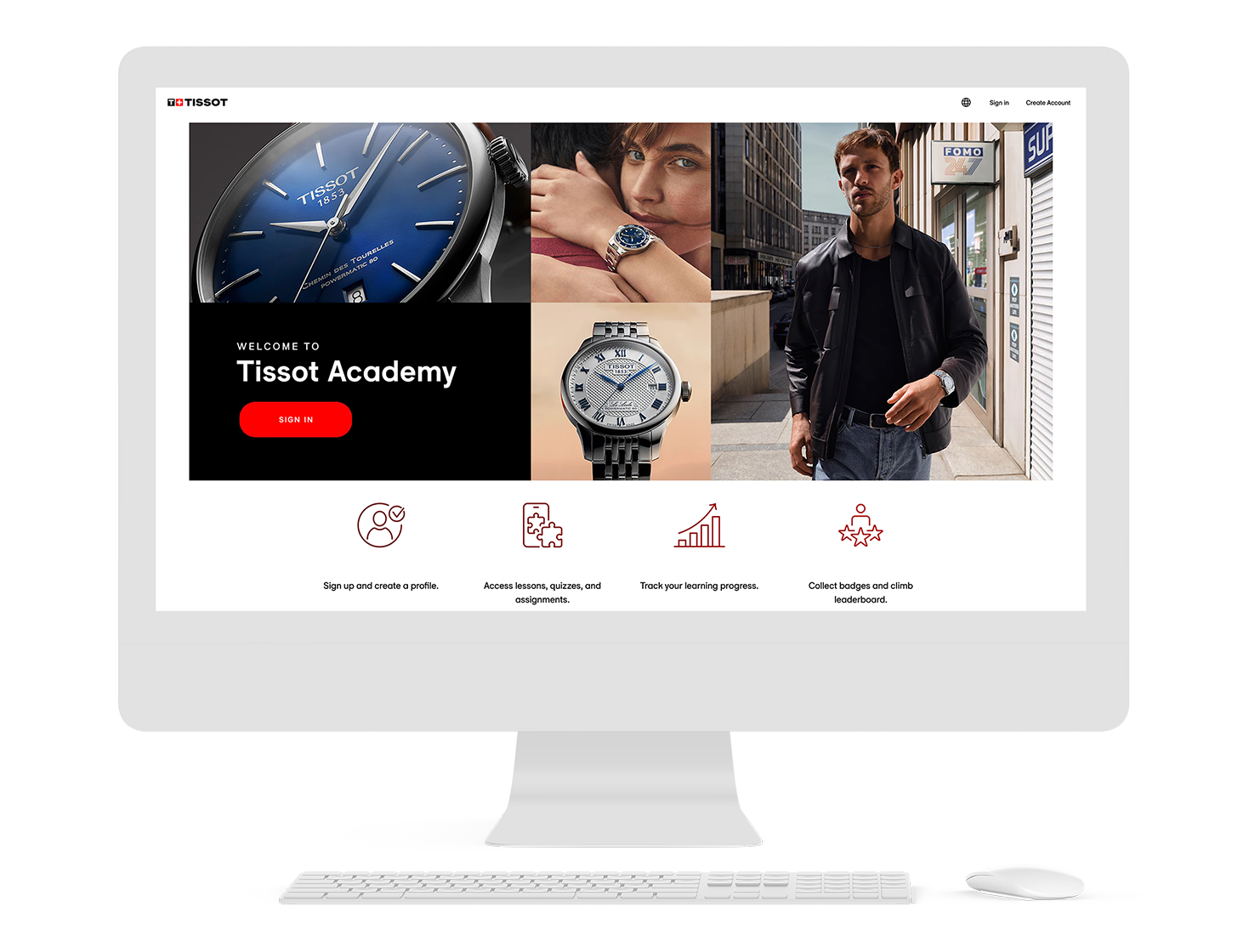6 Expert Tips for Designing Effective Training Programs
Effective Learning Strategies: 6 Smart Tips to Design Training Programs That Work
In any industry, creating an effective training program goes beyond sharing basic information—it’s about developing a skilled, confident, and engaged workforce.
Whether you’re onboarding new employees, improving team performance, or enhancing professional skills, your training program should be practical, interactive, and memorable.
These 6 smart tips will help you design a training program that incorporates hands-on learning, real-world scenarios, and manageable, focused modules. By using these strategies, teams can learn skills effectively, retain knowledge longer, and apply their training confidently to achieve better results.
Author: Pascal Willoughby-Petit
Keep It Clear: How to Design Digital Training That Employees Actually Retain
In digital training programs, especially those accessed on mobile devices, simplicity is key.
Overloading slides with dense text, poor color choices, and static layouts can make it harder for learners to stay focused and retain information.
Instead of long blocks of text, use short, scannable phrases supported by visuals, audio, or video. Ensure strong color contrast for readability and avoid difficult combinations like red on green.
Replace heavy, static slideshows with scrolling pages or modular layouts. Incorporate animations and interactive elements to create a dynamic and engaging online learning experience.
Effective training design is not about including more content—it is about making each element purposeful and easy to absorb.
Key Tips for Digital Training Design
Keep content concise: Break information into short, readable sections for mobile and desktop learners
Use multimedia strategically: Integrate audio, video, and graphics to support different learning styles
Choose accessible colors: Ensure high contrast and accessibility for all learners
Optimize for scrolling: Scrolling pages often feel more natural than static slides
Incorporate movement: Animations and transitions make e-learning more engaging
Make it interactive: Add quizzes, branching scenarios, or tap/swipe actions to create active learning experiences
Engage to Inspire: How to Keep Learners Active in Training Programs
Effective employee training programs do more than deliver information—they actively involve learners.
To ensure participants remain engaged and motivated, training should feel like an experience rather than a lecture.
Instead of saving assessments for the end, embed interactive questions throughout lessons to encourage curiosity, critical thinking, and knowledge retention.
Use dynamic learning tools such as digital flash cards, clickable images, scenario-based simulations, and video quizzes that require learners to apply concepts in context.
For deeper engagement, allow learners to record short video demonstrations or roleplay exercises to showcase their understanding. Combine these strategies with gamification, scenario-based learning, and live feedback to make training both effective and memorable.
Key Strategies for Active Learning
Ask questions throughout: Integrate polls, quizzes, and discussion prompts within lessons
Use interactive flash cards: Present key facts, skills, or challenges with swipe or click interactions
Add clickable visuals: Let learners explore images, charts, or diagrams for deeper understanding
Include video quizzes: Pause tutorials to encourage reflection and knowledge application
Encourage video demonstrations: Have learners record themselves applying skills or simulating work scenarios
Gamify the experience: Use points, badges, or timed challenges to increase motivation and engagement
Simulate real-world scenarios: Build practice situations where learners make decisions and see outcomes
Enable peer feedback: Use forums, group exercises, or collaborative tasks to promote discussion and reflection
Be Real: Using Authentic Stories and Expert Voices to Enhance Online Training
In any industry, trust and authenticity are essential for effective learning. Online training programs become far more impactful when they incorporate real voices, relatable stories, and insights from experienced professionals.
By integrating storytelling, expert interviews, peer contributions, and interactive discussions, you transform passive content into an engaging and memorable learning experience.
Learners connect more deeply with real-life challenges, success stories, and shared expertise, which improves knowledge retention and makes training more meaningful.
Key Strategies for Authentic Training
Interview internal experts: Feature team leaders, project managers, or senior staff sharing tips and practical experiences
Use real stories: Highlight employee journeys, milestone achievements, and workplace examples
Host discussions: Facilitate forums or live sessions where participants can ask questions and exchange ideas
Add video testimonials: Let employees demonstrate problem-solving or share lessons learned from their work
Organize workshops: Conduct small group exercises or simulations to practice skills in a real-world context
Make it personal: Use scenarios learners can relate to, increasing engagement and knowledge retention
Keep It Short and Clear: Bite-Sized Learning That Works
Effective employee training programs should reflect how people naturally learn—quickly, visually, and on the go. Long, text-heavy modules can overwhelm learners and reduce engagement.
This is where microlearning, nano learning, and short-format training make a difference. These approaches deliver focused, high-impact content in just a few minutes, making it easy to teach new skills, procedures, or workplace knowledge without overloading participants. Short training does not mean shallow content—it means smart, targeted learning designed for real-world application.
Key Benefits of Bite-Sized Learning
Mobile-friendly: Ideal for employees accessing training on the go or between tasks
Time-efficient: Covers key concepts in 2–5 minutes
Improves retention: Learners absorb and remember information more effectively
Highly visual: Perfect for demonstrating processes, workflows, or practical tasks
Focused on one objective: Each module has a clear goal and takeaway
Easy to revisit: Employees can review modules anytime for quick refreshers
Brand Consistency: Elevate Training with a Fully Customized Learning Experience
In any industry, a well-designed training program should reflect the organization’s identity and values at every touchpoint.
Effective online training goes beyond transferring knowledge—it immerses learners in a consistent, professional experience.
With a robust training authoring tool, you can create customized learning experiences that mirror your organization’s visual style, tone, and culture. From reusable templates to tailored animations and multimedia content, every element should feel purposeful and aligned with your brand identity.
This approach not only reinforces consistency but also increases learner engagement, making training feel more like an immersive experience rather than a standard course.
Key Elements of a Customized Learning Experience
Custom design and style: Training modules reflect your organization’s colors, fonts, visuals, and messaging
Authoring tools with reusable templates: Centralized slide designs, layouts, and content libraries for efficiency
Multimedia storytelling: Include videos, animations, and audio to enhance learning and engagement
High-quality content creation: Produce professional, on-brand modules without relying on external developers
Immersive learning touchpoints: Each element reinforces organizational culture, values, and objectives
Scalable and consistent rollout: Easily update content across teams with centralized assets for uniform delivery
Listen, Learn, Improve: Collect Feedback to Optimize Training Programs
A successful online training program is never static. It should evolve to meet the needs of learners and remain effective over time.
To create truly impactful employee training, it is essential to engage participants and collect real feedback. This can include brief interviews, in-platform ratings, and comments. Learner input provides valuable insight into what works and what needs improvement.
Take it further with detailed surveys, performance analytics, and completion tracking. A continuous feedback loop allows you to regularly refine content, keep training relevant, and ensure your program supports both organizational goals and workforce development.
Key Strategies to Gather Feedback and Improve Training
Interview learners: Speak with employees to understand what resonates and where gaps exist
Enable course feedback: Allow participants to rate, comment, and suggest improvements directly in the platform
Conduct detailed surveys: Collect insights on clarity, engagement, and the real-world impact of training
Track analytics: Monitor completion rates, quiz scores, and time spent per module
Update content regularly: Refine visuals, simplify language, or restructure modules based on insights
Create feedback routines: Involve team leads or trainers in regular reviews to co-develop future content
Conclusion: 6 Smart Tips to Design Training Programs That Work
Designing an effective training program is not just about delivering information. It is about creating a learning experience that reflects organizational values, connects with participants, and inspires confidence in applying new skills.
By applying these six proven training strategies, you can develop programs that are engaging, memorable, and results-driven. When professional learning is well-designed, employees do more than complete a course—they grow, perform at higher levels, and become stronger contributors to organizational success.




